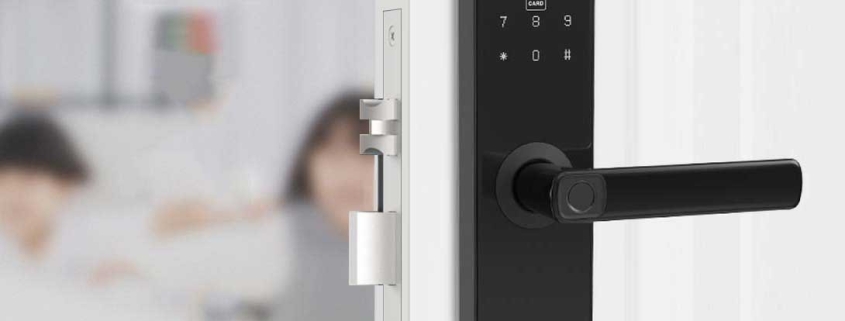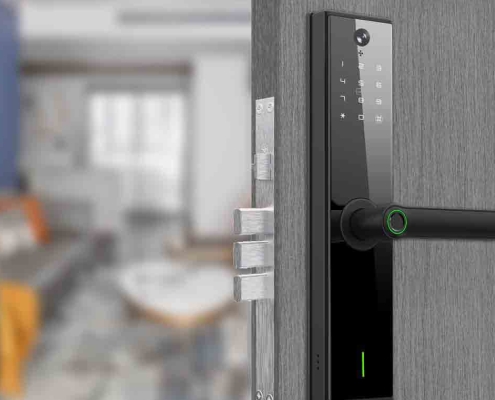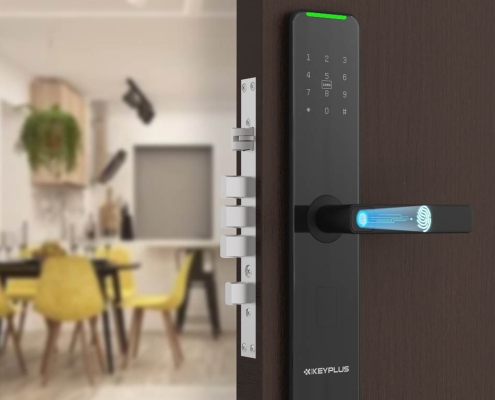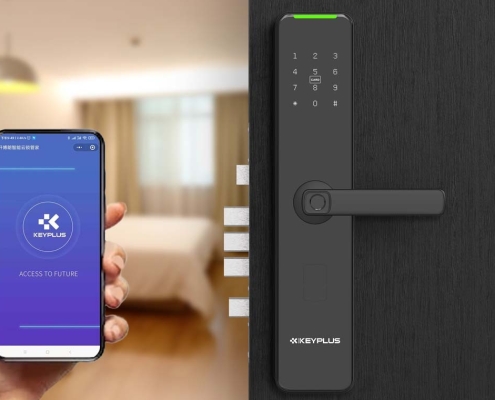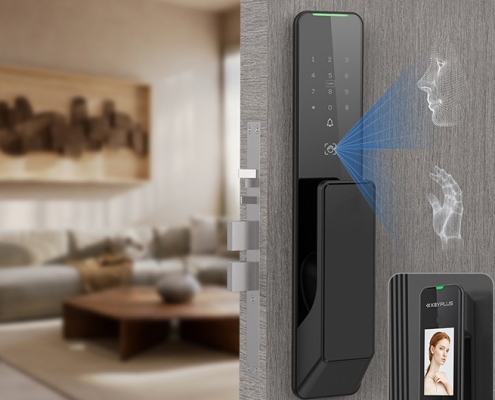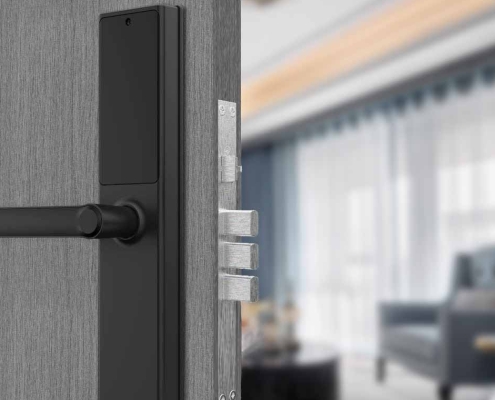Are Fingerprint Smart Locks Safe?
In recent years, fingerprint smart locks have gained popularity as a convenient and modern alternative to traditional keys. These locks allow homeowners to unlock their doors with just a touch, eliminating the need for physical keys. But with this convenience comes an important question: Are fingerprint smart locks really safe?
This article explores the security, benefits, and potential risks of fingerprint smart locks, helping you decide whether they are the right choice for your home.
How Do Fingerprint Smart Locks Work?
Fingerprint smart locks use biometric technology to identify authorized users. Here’s how they typically function:
-
Fingerprint Scanning – When you place your finger on the scanner, it captures the unique ridges and patterns of your fingerprint.
-
Data Matching – The lock compares the scanned fingerprint with stored authorized prints.
-
Access Granted/Denied – If there’s a match, the door unlocks. If not, access is denied.
Many fingerprint locks also include additional security features such as PIN codes, RFID cards, or smartphone connectivity as backup access methods.
The Security Benefits of Fingerprint Smart Locks
1. No Physical Keys to Lose or Duplicate
Traditional keys can be lost, stolen, or copied without your knowledge. Fingerprint locks eliminate this risk since access is tied to biometric data.
2. Unique and Difficult to Replicate
Every fingerprint is unique, making it extremely difficult for intruders to fake or duplicate. Unlike passwords or keys, biometrics cannot be easily guessed or stolen.
3. Tamper-Proof Features
Many smart locks include:
-
Anti-spoofing technology to detect fake fingerprints.
-
Brute-force attack protection that locks out after multiple failed attempts.
-
Alerts and logs that notify homeowners of unauthorized access attempts.
4. Remote Access and Monitoring
Some models integrate with home security systems, allowing users to:
-
Monitor entry logs via smartphone.
-
Grant temporary access to guests.
-
Receive alerts for suspicious activity.
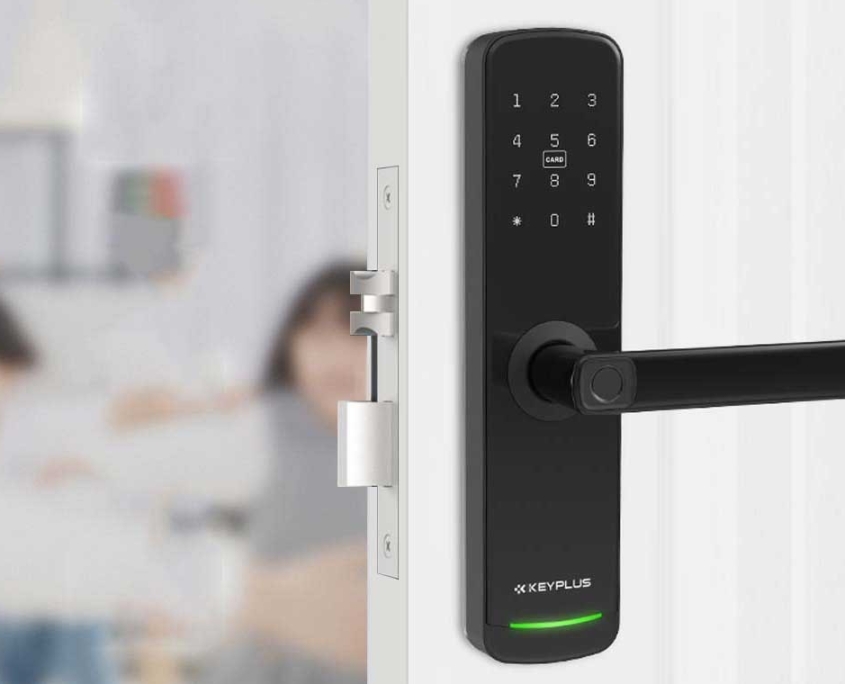
Potential Security Risks and Concerns
Despite their advantages, fingerprint smart locks are not without vulnerabilities. Here are some potential risks:
1. Fingerprint Spoofing (Fake Fingerprints)
While rare, skilled hackers can sometimes bypass fingerprint scanners using:
-
High-resolution fingerprint copies (e.g., lifted from glass surfaces).
-
Silicone or gelatin molds of fingerprints.
Mitigation: Advanced scanners with live detection (measuring blood flow or temperature) can reduce this risk.
2. Technical Failures and Power Issues
-
Dead batteries can lock you out if there’s no backup power or mechanical key override.
-
Software bugs may cause malfunctions, leaving the lock unresponsive.
Mitigation: Choose models with backup power options (USB charging, emergency keys).
3. Cybersecurity Threats (Wi-Fi/Bluetooth Models)
Smart locks connected to home networks can be vulnerable to:
-
Hacking via weak passwords or unsecured Wi-Fi.
-
Bluetooth exploits that allow nearby attackers to intercept signals.
Mitigation: Use strong passwords, enable two-factor authentication, and keep firmware updated.
4. Physical Tampering (Prying or Drilling)
Like traditional locks, smart locks can be physically attacked. However, high-quality models often include:
-
Reinforced metal bodies to resist drilling.
-
Tamper alarms that trigger if someone tries to force entry.
Are Fingerprint Smart Locks Safer Than Traditional Locks?
Advantages Over Traditional Locks
✔ No key duplication risks.
✔ Real-time monitoring capabilities.
✔ Convenience (no need to carry keys).
Disadvantages Compared to Traditional Locks
✖ Dependence on electricity (battery-powered).
✖ Potential hacking risks (for Wi-Fi-enabled models).
✖ Higher cost than standard deadbolts.
Best Practices for Secure Fingerprint Lock Use
To maximize security, follow these tips:
-
Enable Multi-Factor Authentication – Use fingerprint + PIN or smartphone verification for extra security.
-
Regularly Update Firmware – Manufacturers release patches for vulnerabilities.
-
Use a Backup Entry Method – Keep a mechanical key or RFID card in case of battery failure.
-
Clean the Scanner Regularly – Dust and dirt can reduce accuracy.
-
Avoid Storing Fingerprint Data in the Cloud – Opt for locks that store biometric data locally.
Conclusion: Should You Use a Fingerprint Smart Lock?
Fingerprint smart locks offer a strong balance of convenience and security, but they are not foolproof. Their safety depends on:
-
The quality of the scanner (anti-spoofing features).
-
Additional security layers (PIN, encryption).
-
Proper installation and maintenance.
For most homeowners, fingerprint smart locks are a secure and practical upgrade from traditional locks—especially when combined with other smart home security measures. However, if you prioritize absolute physical security, a high-grade deadbolt with a fingerprint lock as a secondary option may be the best approach.
Would you switch to a fingerprint smart lock? Share your thoughts in the comments!

